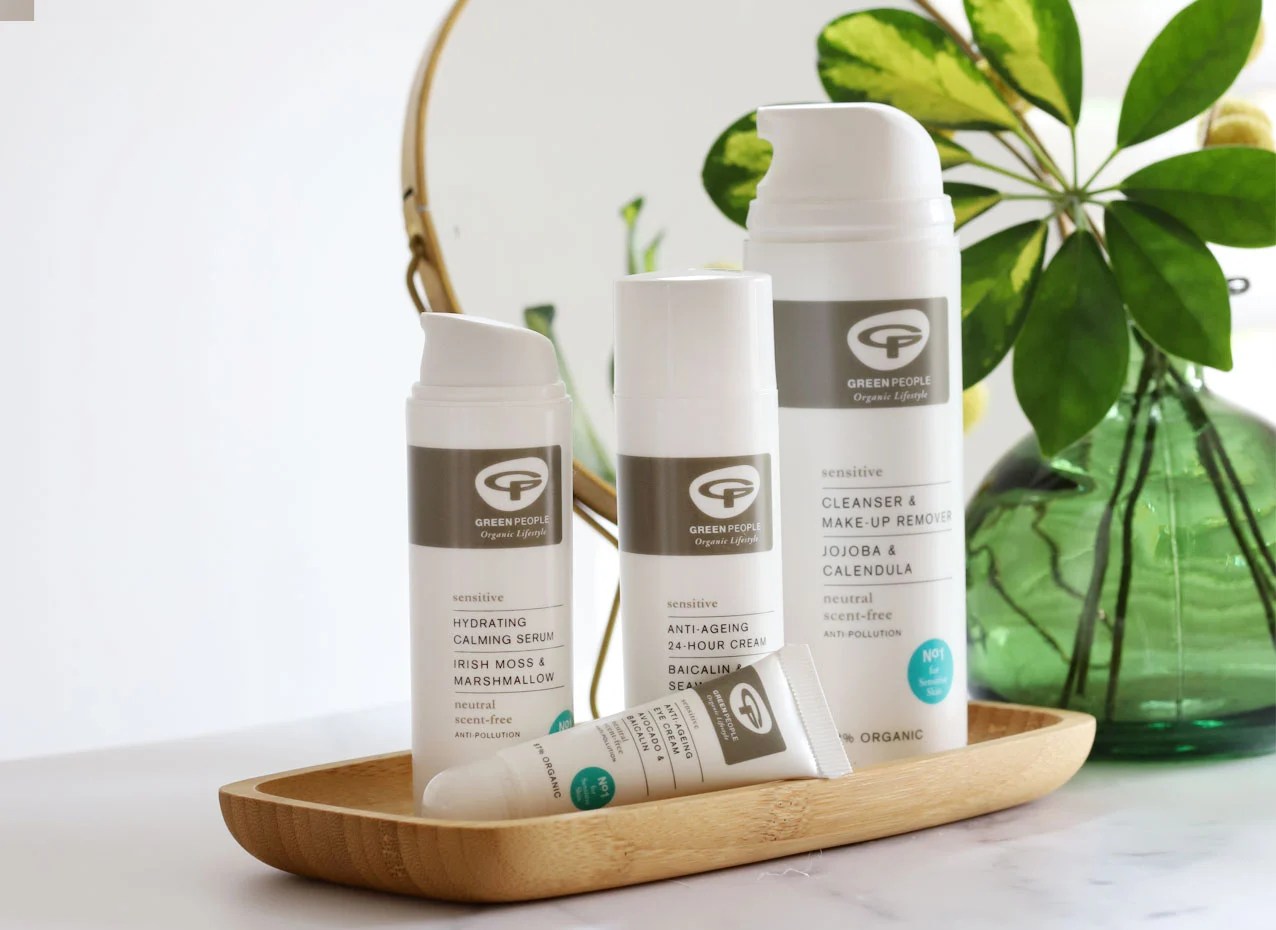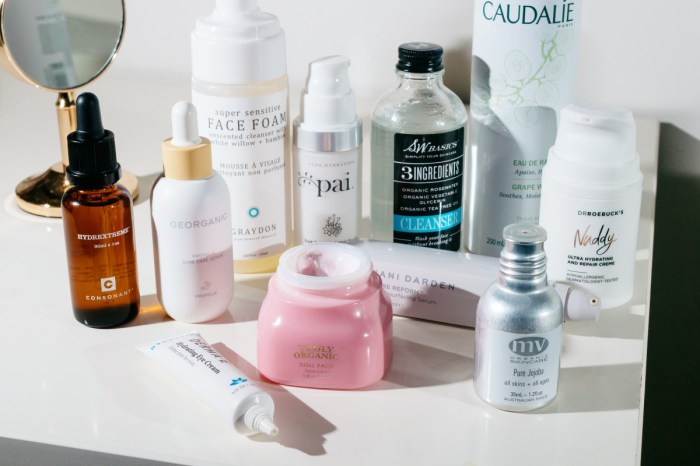
Defining “Sensitive Skin”

Sensitive skin is a common skin condition characterized by its heightened reactivity to various external and internal stimuli. This heightened sensitivity manifests in a variety of ways, making it crucial to understand its characteristics and triggers to effectively manage and care for it. Understanding sensitive skin is the first step towards finding the right products and developing a suitable skincare routine.
Sensitive skin reacts more easily than normal skin to a wide range of factors. This increased reactivity stems from a compromised skin barrier, leaving it more vulnerable to irritation and inflammation. The skin barrier, a crucial protective layer, is responsible for preventing water loss and protecting against harmful external elements. When this barrier is weakened, the skin becomes more susceptible to environmental stressors, resulting in various uncomfortable symptoms.
Characteristics of Sensitive Skin
Sensitive skin is characterized by its fragility and proneness to irritation. It often appears thin and delicate, and may easily flush or become red. Individuals with sensitive skin often experience discomfort from even mild skincare products or environmental factors. The skin may feel tight, itchy, or burn easily. This heightened reactivity is a key distinguishing feature, setting it apart from other skin types.
Common Triggers for Sensitive Skin Reactions
A variety of factors can trigger reactions in sensitive skin. These triggers can be broadly categorized as environmental, cosmetic, and internal factors. Environmental triggers include harsh weather conditions (extreme heat, cold, or wind), pollution, and UV radiation. Cosmetic triggers encompass fragrances, preservatives, certain ingredients in skincare products (like alcohols or sulfates), and even harsh scrubbing. Internal triggers may include stress, hormonal fluctuations, and certain medical conditions.
Understanding these triggers is essential for proactive skin care.
Symptoms Associated with Sensitive Skin
The symptoms of sensitive skin vary in severity and presentation depending on the individual and the trigger. Common symptoms include redness, burning sensations, itching, stinging, dryness, tightness, and a feeling of overall discomfort. In more severe cases, reactions may manifest as rashes, inflammation, or even visible broken capillaries. Recognizing these symptoms helps in identifying sensitive skin and taking appropriate measures to manage it.
Comparison of Different Types of Sensitive Skin
Sensitive skin isn’t a monolithic entity; it can manifest differently depending on other skin characteristics like dryness or oiliness. The underlying sensitivity remains consistent, but the accompanying symptoms and needs for care may vary.
| Type of Sensitive Skin | Characteristics | Common Symptoms | Recommended Care |
|---|---|---|---|
| Dry Sensitive Skin | Tightness, flaky patches, visible dryness | Redness, itching, burning, scaling | Rich, hydrating moisturizers, gentle cleansers |
| Oily Sensitive Skin | Shine, enlarged pores, prone to breakouts | Redness, inflammation, burning after using certain products | Lightweight, oil-free moisturizers, non-comedogenic products |
| Combination Sensitive Skin | Dry patches in some areas, oily in others | Redness, uneven texture, dryness in some areas, oiliness in others | Targeted moisturizers, gentle cleansers, potentially different products for different areas |
Cleanser Selection for Sensitive Skin
Choosing the right cleanser is paramount for individuals with sensitive skin. The wrong product can exacerbate existing conditions, leading to irritation, redness, and discomfort. A gentle cleanser, formulated with consideration for pH balance and skin type, is essential for maintaining a healthy skin barrier and preventing further sensitivity.
Gentle Cleanser Recommendations for Sensitive Skin
Several cleanser types are well-suited for sensitive skin. Look for products explicitly labeled as “for sensitive skin” or “hypoallergenic.” These often contain fewer potential irritants and fragrances. Effective options often include those formulated with ceramides, which help support the skin’s natural barrier, and ingredients like colloidal oatmeal, known for its soothing properties. Examples of gentle cleanser brands often recommended include Cetaphil, La Roche-Posay, and CeraVe.
These brands frequently offer a range of formulations, allowing for personalized selection based on individual preferences (cream, gel, or oil-based).
The Importance of pH Balance in Cleansers for Sensitive Skin
Maintaining the skin’s natural pH level (slightly acidic, around 5.5) is crucial for sensitive skin. A disrupted pH balance can weaken the skin barrier, making it more vulnerable to irritation and inflammation. Cleansers with a pH level close to the skin’s natural pH are less likely to disrupt this delicate balance. Look for cleansers that specify their pH level on the packaging, ideally within the range of 4.5 to 6.5.
Using a cleanser that is too alkaline can strip the skin of its natural oils, leading to dryness and increased sensitivity.
Benefits and Drawbacks of Different Cleanser Types
- Cream Cleansers: These are generally very gentle and hydrating, making them ideal for dry and sensitive skin. They often contain moisturizing ingredients that leave the skin feeling soft and supple. However, they might not be suitable for those with oily or acne-prone skin as they can potentially clog pores.
- Gel Cleansers: Gel cleansers offer a lighter feel than cream cleansers and are often suitable for combination or oily skin. They can effectively remove excess oil and dirt without being overly drying. However, some gel cleansers may contain harsh surfactants that can irritate sensitive skin; therefore, careful ingredient selection is crucial.
- Oil Cleansers: Oil cleansers might seem counterintuitive for sensitive skin, but they can be surprisingly effective. The “like dissolves like” principle means oil effectively removes oil-based impurities without stripping the skin’s natural oils. They are particularly beneficial for removing makeup and are often very gentle. However, some individuals may find them too heavy or greasy for their skin type.
Proper Cleansing Technique for Sensitive Skin
Gentle cleansing is key. Avoid harsh scrubbing or rubbing. Instead, use lukewarm water (not hot) and apply the cleanser with soft, circular motions. Rinse thoroughly and pat the skin dry with a soft towel, avoiding harsh rubbing. Over-cleansing should also be avoided; once or twice daily is usually sufficient.
Following cleansing, apply a moisturizer immediately to help replenish the skin’s moisture barrier. This helps to maintain hydration and prevent dryness, a common trigger for sensitive skin irritation.
Moisturizer Selection for Sensitive Skin

Choosing the right moisturizer is crucial for sensitive skin, as the wrong product can trigger irritation, redness, and discomfort. A good moisturizer will help to maintain the skin’s barrier function, preventing moisture loss and protecting against environmental aggressors. The key is to select a product that is gentle, effective, and formulated to minimize the risk of allergic reactions.
Key Ingredients in Moisturizers for Sensitive Skin
Several key ingredients are particularly beneficial for sensitive skin. Ceramides, naturally occurring lipids in the skin, help to repair and strengthen the skin barrier, preventing moisture loss and irritation. Hyaluronic acid is a humectant, meaning it attracts and retains moisture, keeping the skin hydrated and plump. Other beneficial ingredients include soothing agents like colloidal oatmeal and antioxidants such as vitamin E, which can help to protect against environmental damage and reduce inflammation.
Avoid ingredients known for their potential to irritate sensitive skin, such as fragrances, essential oils, and harsh preservatives.
Comparison of Moisturizer Types
Creams, lotions, and serums all offer hydration, but they differ in their texture and consistency. Creams are generally thicker and richer, providing more intense hydration, making them ideal for dry or very dry skin. Lotions are lighter and absorb more quickly, suitable for normal to slightly dry skin or combination skin that is drier in certain areas. Serums are typically lightweight and fast-absorbing, often containing a higher concentration of active ingredients, but they may not provide sufficient hydration on their own for very dry skin types and should be used in conjunction with a moisturizer.
Examples of Fragrance-Free and Hypoallergenic Moisturizers
Many brands offer fragrance-free and hypoallergenic moisturizers specifically designed for sensitive skin. These products often undergo rigorous testing to minimize the risk of allergic reactions. Look for products clearly labeled as “fragrance-free,” “hypoallergenic,” or “dermatologist-tested.” Specific product names are avoided here to prevent endorsement and to account for regional variations in product availability. Always check product labels for a complete list of ingredients before use.
Moisturizer Recommendations Based on Skin Type
Choosing the right moisturizer depends on your specific skin type.
- Dry Skin: Look for rich, creamy moisturizers containing ceramides, hyaluronic acid, and occlusive ingredients like shea butter or petrolatum to lock in moisture. Avoid lotions, as they may not provide sufficient hydration.
- Oily Skin: Opt for lightweight, oil-free lotions or gels that won’t clog pores. Look for moisturizers containing ingredients like hyaluronic acid or glycerin to hydrate without adding excess oil. Avoid heavy creams.
- Combination Skin: A combination approach may be best. Use a richer cream on drier areas (cheeks, for example) and a lighter lotion on oilier areas (T-zone). Consider a gel-cream moisturizer that balances hydration and oil control.
Sunscreen Considerations for Sensitive Skin
Protecting sensitive skin from the sun’s harmful ultraviolet (UV) rays is crucial for preventing sunburn, premature aging, and reducing the risk of skin cancer. Sensitive skin is more prone to irritation and reactions, making sunscreen selection and application particularly important. Choosing the right sunscreen can be the difference between a comfortable day and a painful reaction.Sunscreens suitable for sensitive skin typically share key characteristics.
These characteristics minimize the risk of irritation and ensure effective sun protection.
Mineral-Based Sunscreens and Broad-Spectrum Protection
Mineral sunscreens, containing zinc oxide and/or titanium dioxide, are generally well-tolerated by sensitive skin. These ingredients work by creating a physical barrier on the skin that reflects UV rays, rather than absorbing them like chemical sunscreens. This physical blocking action reduces the likelihood of irritation. Furthermore, choosing a broad-spectrum sunscreen is essential. Broad-spectrum protection means the sunscreen protects against both UVA and UVB rays, which are both damaging to the skin.
UVA rays penetrate deeper into the skin causing aging, while UVB rays are primarily responsible for sunburn.
Applying Sunscreen to Minimize Irritation
Proper application techniques are vital for minimizing irritation with any sunscreen, but especially for sensitive skin. Apply sunscreen liberally to all exposed skin at least 15-30 minutes before sun exposure. Gently rub the sunscreen into the skin until it’s fully absorbed, avoiding harsh rubbing which could cause irritation. Reapply every two hours, or more frequently if swimming or sweating.
For the face, consider using a dedicated facial sunscreen formulated for sensitive skin.
Selecting the Right SPF for Sensitive Skin
The SPF (Sun Protection Factor) number indicates the level of UVB protection a sunscreen provides. While higher SPF numbers offer greater protection, an SPF of 30 or higher is generally recommended for most individuals, including those with sensitive skin. An SPF of 30 blocks approximately 97% of UVB rays, while an SPF of 50 blocks about 98%. The incremental increase in protection is minimal, but the higher SPF may provide a slight psychological benefit for those who feel more secure with higher SPF values.
However, consistent and thorough application remains more important than the specific SPF number. Remember, no sunscreen offers 100% protection, so seeking shade during peak sun hours and wearing protective clothing remain essential parts of sun safety.





